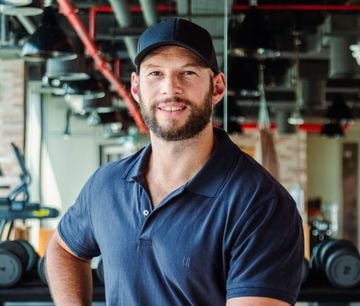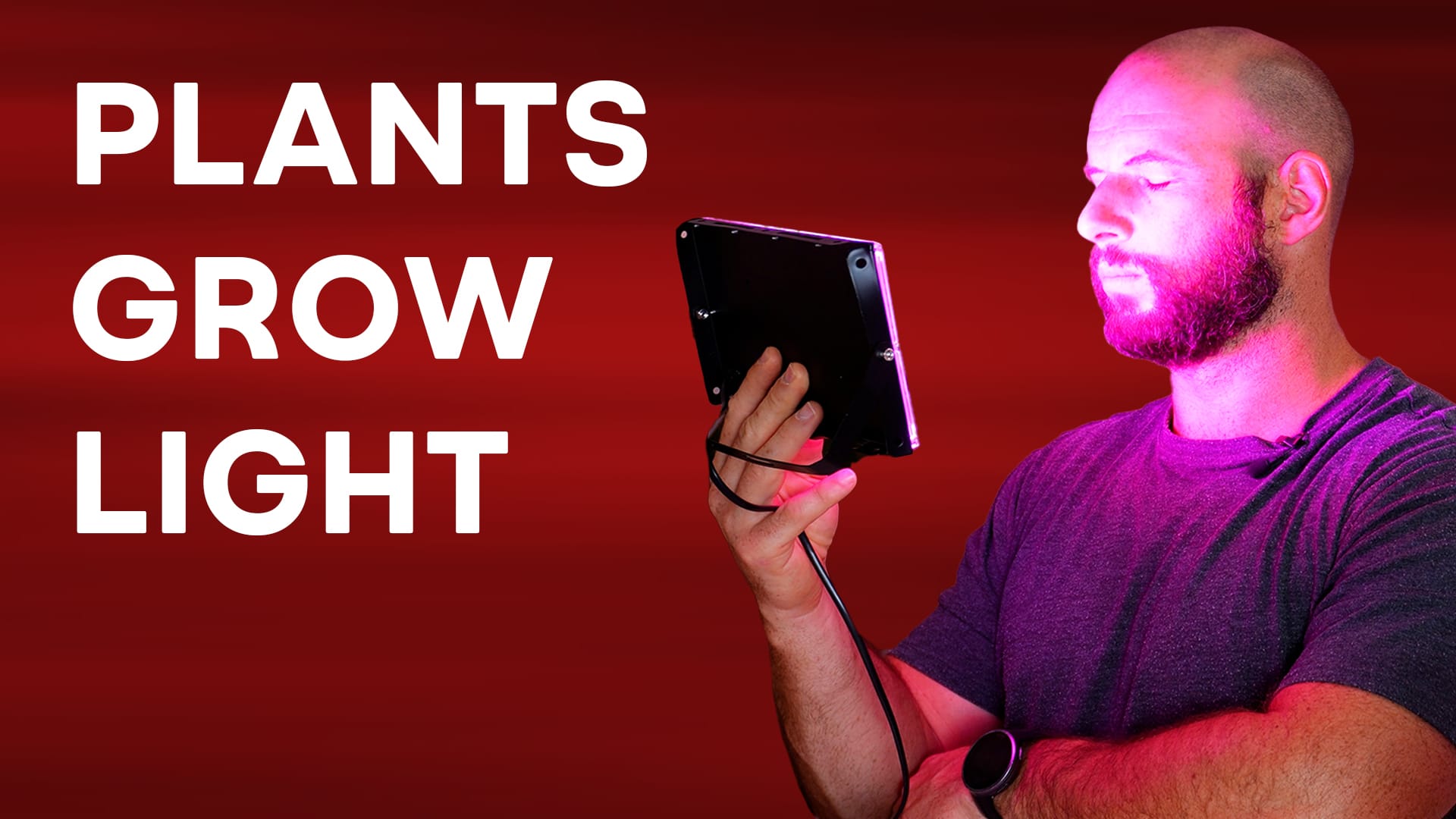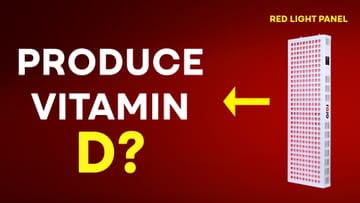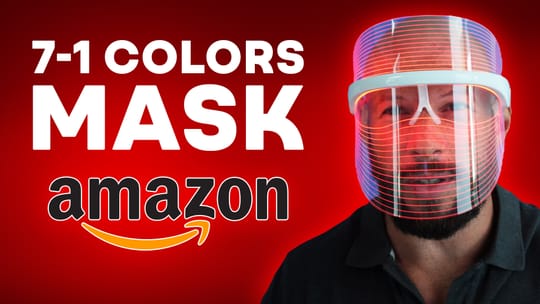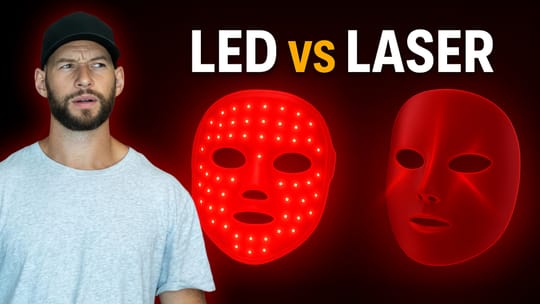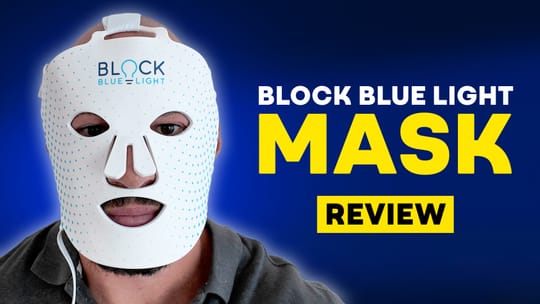Can a $20 Grow Light Replace a Red Light Therapy Panel?
You’ve probably seen the flashy marketing campaigns for red light therapy devices — sleek designs, scientific buzzwords, and often eye-watering prices.
But what if I told you that, for about $20, you could buy a grow light off AliExpress that, at first glance, looks a bit like a red light therapy panel? Could it do the job? Is it even worth considering?
That’s precisely what I set out to test.
Meet the $20 Grow Light.
So here it is — my latest curiosity-fueled purchase: a 200-watt grow light from AliExpress. You're way off if you're picturing a high-tech device with buttons and displays. This thing is as basic as it gets. It's a thin panel with a basic kickstand and a power cord: no fans, heat sinks, or frills.
Within seconds of turning it on, I could already feel some heat radiating off it — not overwhelming, but enough to notice. What immediately stands out, though, is the color. It's putting out a pinkish light, which isn’t exactly what you'd see from a standard red light therapy device.
But before jumping to conclusions, I grabbed my spectrometer—time to get real data.
What Makes a Good Light Therapy Panel?
Before diving into the results, let’s recap what actually matters in a proper red light therapy device. It comes down to two things: wavelength and power output.
Wavelength Matters
The mitochondria — your cells' power plants — respond particularly well to specific wavelengths of light. This is where cytochrome c oxidase comes into play. It's a key player in the mitochondrial chain and is highly responsive to specific wavelengths in the red and near-infrared spectrum. This interaction is one of the main reasons red light therapy works so well. The light supercharges your mitochondria, helping them produce more energy efficiently and reliably.
While there is some range to what wavelengths can be effective, the core therapeutic wavelengths include:
That’s why most legitimate red light panels feature both red and near-infrared LEDs.
But it's not just about mitochondria. Other wavelengths can help in different areas. For instance, 415nm blue light is known to help with acne. Deeper, near-infrared wavelengths can also target brain health and cognition.
Power Is Equally Critical
Even if you have the perfect wavelengths, if the power output is too low, the benefits will be minimal or even nonexistent. Light therapy depends on delivering a certain amount of energy, measured in joules, to the tissue. So, if your panel doesn’t emit enough power, the session becomes ineffective, no matter how good the wavelengths are.
Back to the Grow Light – What Did the Spectrometer Reveal?
So, back to our budget grow light. With my spectrometer in hand, I started gathering data.
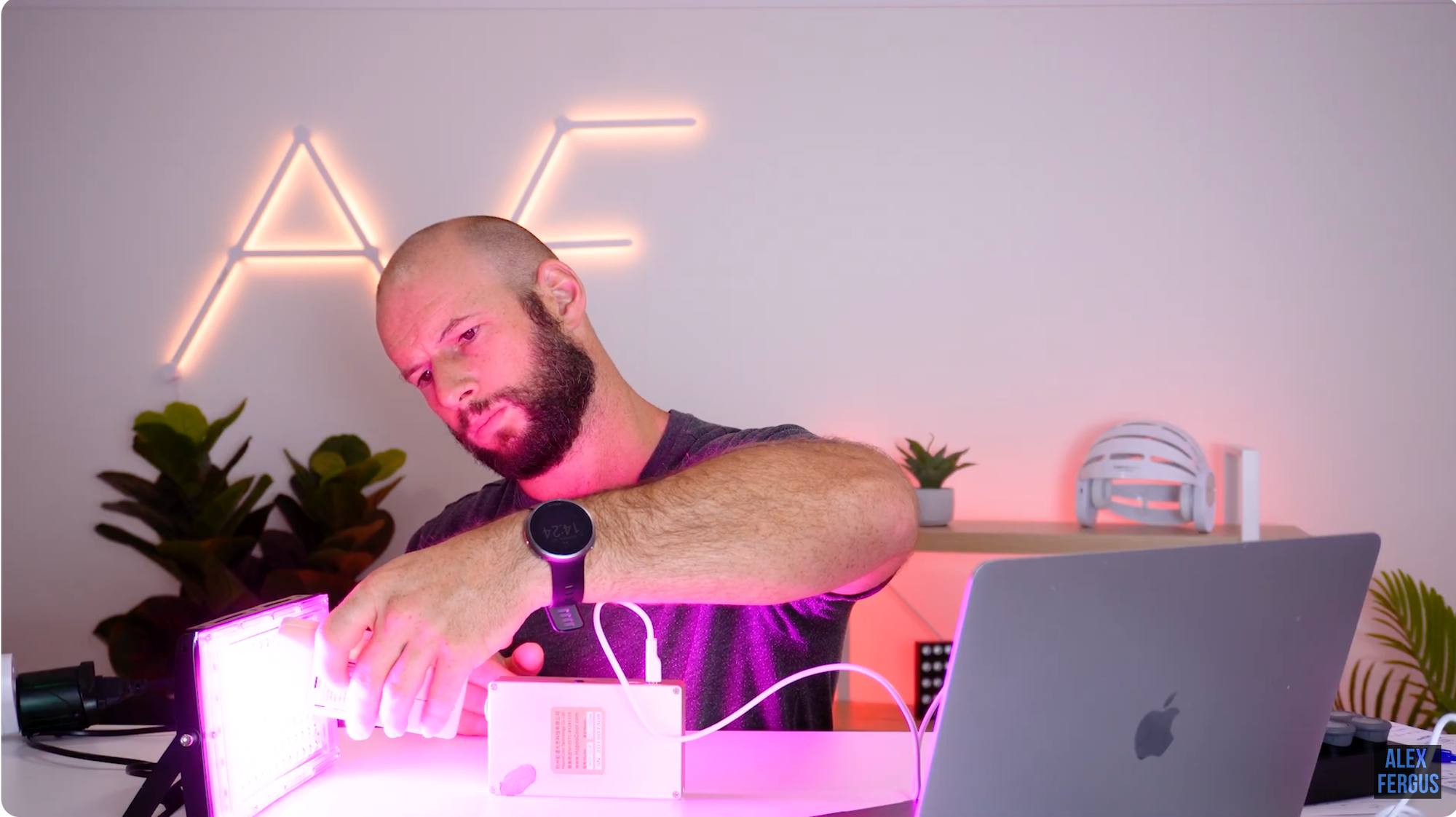
Power Output
At a distance of about six inches, this grow light was putting out between 15 and 20 milliwatts per square centimeter. That’s not too bad, especially when you consider the price and the fact that it doesn’t have high-power LEDs. But keep in mind—it’s not just about that number.
We also need to look at how that power is distributed across the spectrum.
Wavelengths Present
This panel isn’t just pushing out red light. Here's what I found:
- A clear blue light peak around 450nm, with a range from about 440 to 460nm.
- A broad red light band peaking at 655nm, stretching roughly from 620nm to 700nm.
- A touch of near-infrared light around 900nm, but faint — not much energy there.
So, yes, this device emits some of the proper red light wavelengths — enough to support mitochondrial function. That’s encouraging. But it’s also blasting out a decent amount of blue light, complicating things.
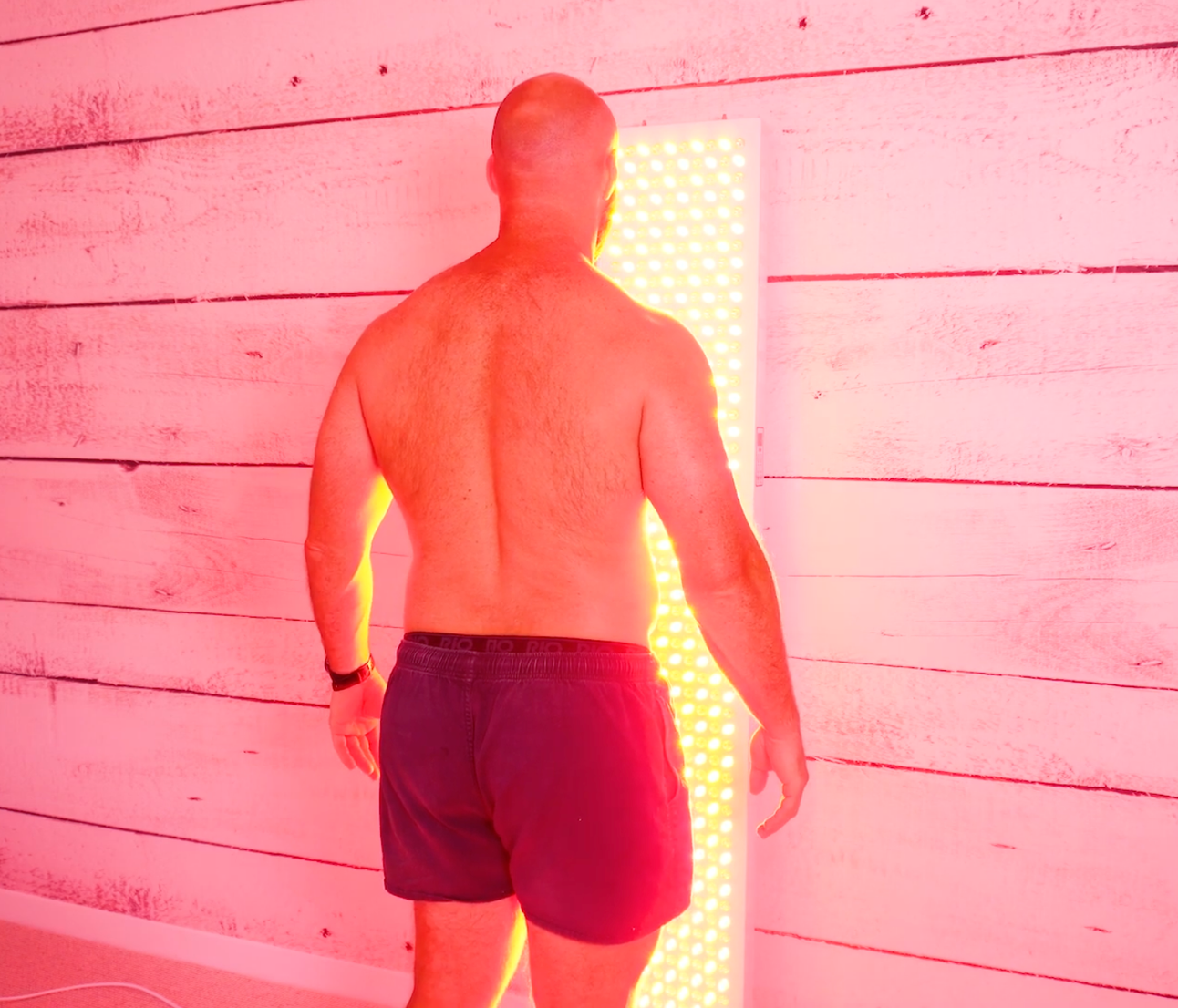
So... Can This Be Used for Light Therapy?
Technically? Yes. Practically? Not ideal.
Let’s break it down.
The Good
The red light output — especially in the 655 to 670nm range — does fall into the therapeutic sweet spot. That means your mitochondria could benefit. You’d also get some general red light therapy perks: reduced inflammation, improved blood flow, and even a bump in collagen production for better skin health—all solid wins.
The Questionable
That blue light isn’t doing much in terms of red light therapy. While 450nm can benefit skin conditions like acne or provide a cognitive and energy boost during the day, it’s not something you want too much of.
Blue light — particularly in the evening — can seriously affect your circadian rhythm. Use this light at night, and you might lie awake in bed longer than you’d like. High amounts of blue light, especially close to the eyes, can cause eye strain or damage over time. So, eye protection is necessary if you’re using this near your face.
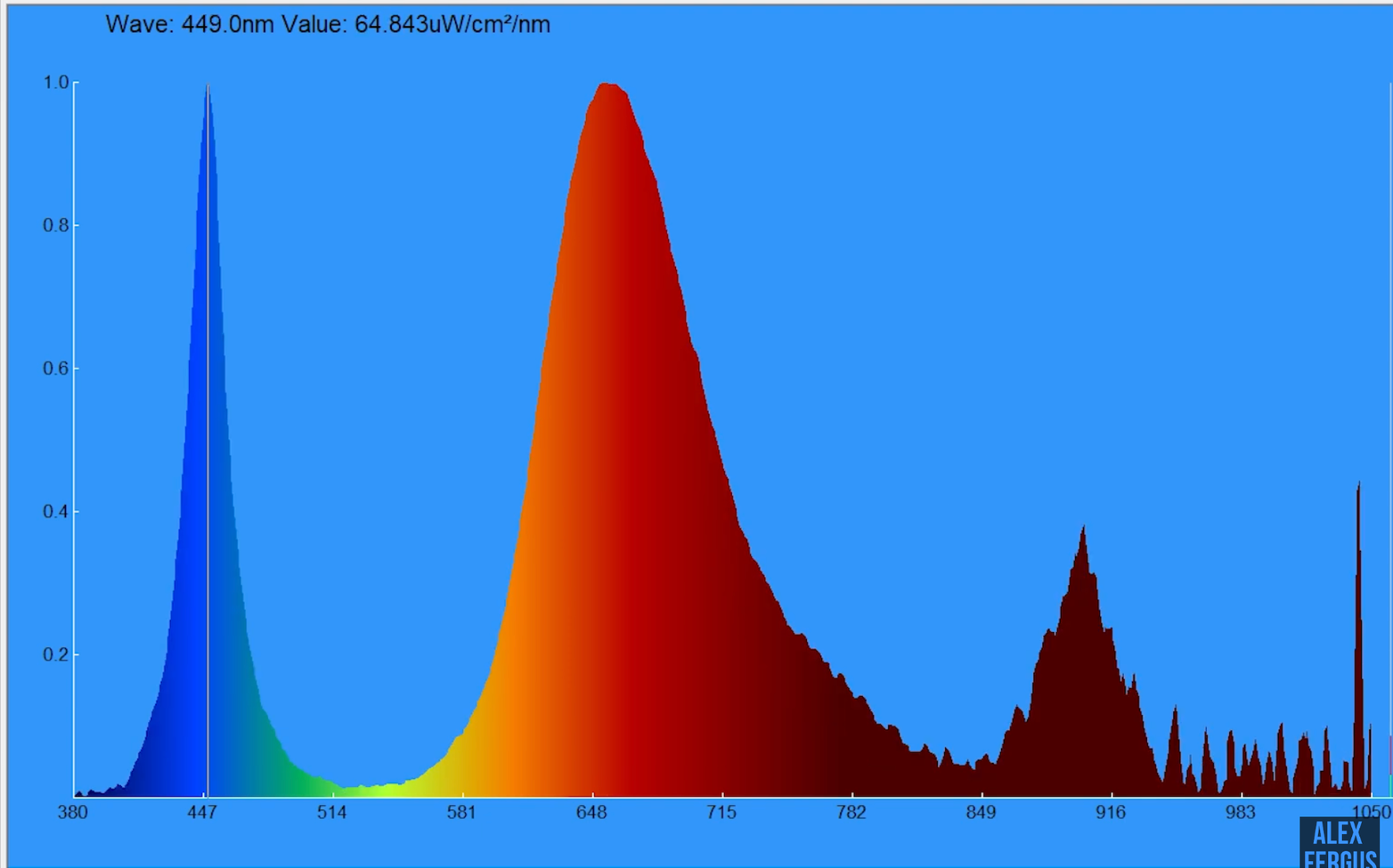
The Weak Points
There’s one more major downside: power. Although the numbers aren't terrible, remember that about half the output goes toward blue light — the part we don’t want. That means the adequate therapeutic red light power is halved.
If you aim to apply 10 to 20 joules of energy to a targeted area (common for surface-level benefits), you’ll need to sit in front of this panel for at least 15 to 20 minutes — and that’s at close range.
Cheap Price, Cheap Build
Let’s not sugarcoat it: this thing is cheap — and it shows.
When it arrived, the metal brackets were bent, and a big crack ran through the front panel. This is not exactly confidence-inspiring.
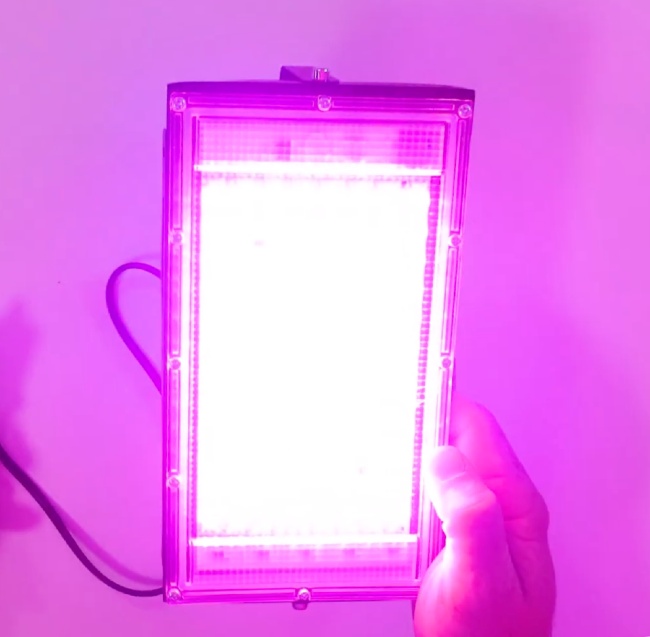
And then there's the electric field EMF output. It was off the charts. If you’re trying to keep EMF exposure low, especially in a therapeutic context, this is a red flag. Add to that the lack of a control panel, no timer, and a pretty flimsy build, and you’re looking at something that’s more “budget science project” than “health optimization tool.”
The real killer, though, is the blue light. It’s included to stimulate plant growth, not to benefit human biology. Most people don’t need or want high-intensity blue light. And even if the red light is decent, the blue makes this a risky device to use casually or frequently.
It might work better if there were a way to filter or disable the blue light altogether. But as it stands, this is not a panel built for humans.
Final Verdict
So, could you use a cheap grow light like this one as a red light therapy device?
Yes — but should you? Probably not.
While the grow light does emit some therapeutic red wavelengths and produces enough power to give marginal benefits, it’s a far cry from a purpose-built red light therapy device. The high blue light output, cheap construction, lack of safety features, and questionable EMF levels make this something I wouldn’t recommend, even at the bargain price.
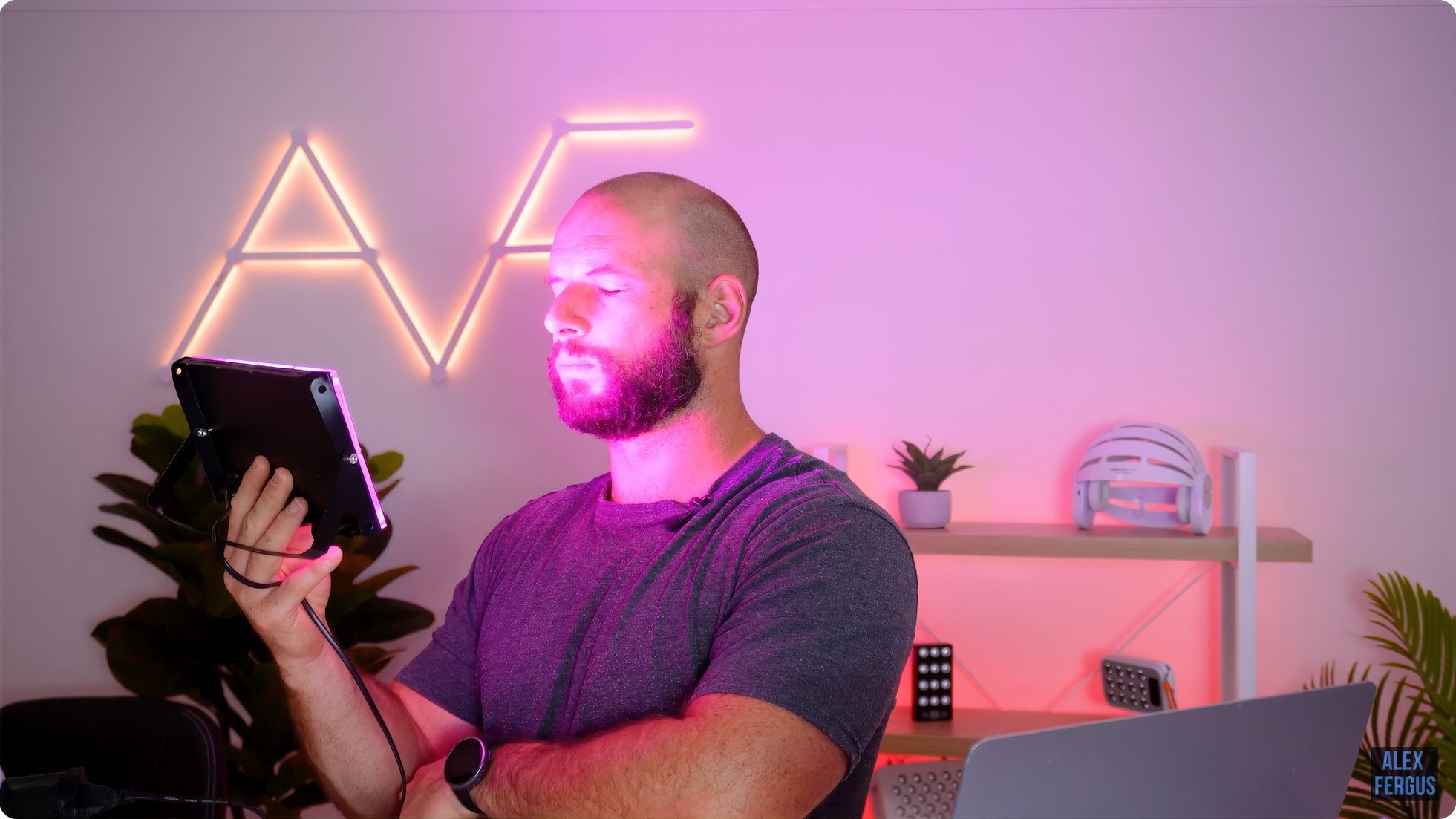
If your budget is tight and you’re looking for cost-effective options, I’ve got better solutions. In fact, I’ve tested a red light panel that I bought directly from a manufacturer in China using Alibaba. I cut out the middleman, saved a ton, and got a device specifically made for therapeutic use. If you're curious, be sure to check out that video.
And if you're interested in seeing me test a higher-powered grow light — something more like $200 but still far cheaper than premium light therapy panels — let me know. I’ll only do it if enough people are keen, since those panels aren’t cheap either.
Until then, avoid the pink lights in the plant aisle and stick to devices that are actually built for human biology.
Consider These YouTube Videos As Well:
⭐ Red Light Therapy Panels 2025: BEST Options REVEALED!
⭐ 6 Reasons Why Red Light Therapy's Popularity Is EXPLODING!!
⭐ Red Light Therapy Panel Size: What You NEED To Know!
⭐ Light Therapy Insiders SCIENCE Articles! Must-See!
⭐ Red Light Therapy Panels 2025: Your BEST Options!
Found This Interesting? Look At These Articles:
⭐ Red Light Therapy For Traumatic Brain Injury Science: Speed Up Recovery Significantly!
⭐ Red Light Therapy For Multiple Sclerosis: Impressive Emerging Science!
⭐ Starting A Red Light Therapy Business: Doctor & Entrepreneur With Clinic Case Study!
⭐ Red Light Therapy For Migraines 101: Why The Research Is Super Promising!
⭐ Photobiomodulation In Dentistry Deep-Dive Interview: Dentist Explains All!
Alex's Bio
This blog post was written by Alex Fergus. Alex is a ISSN Sports Nutrition Specialist, Fitness Professional and certified Superhuman Coach who continues to expand his knowledge base and help people across the world with their health and wellness. Alex is recognized as the National Record Holder in Powerlifting and Indoor Rowing and has earned the title of the Australian National Natural Bodybuilding Champion. Having worked as a health coach and personal trainer for over a decade, Alex now researches all things health and wellness and shares his findings on this blog.
